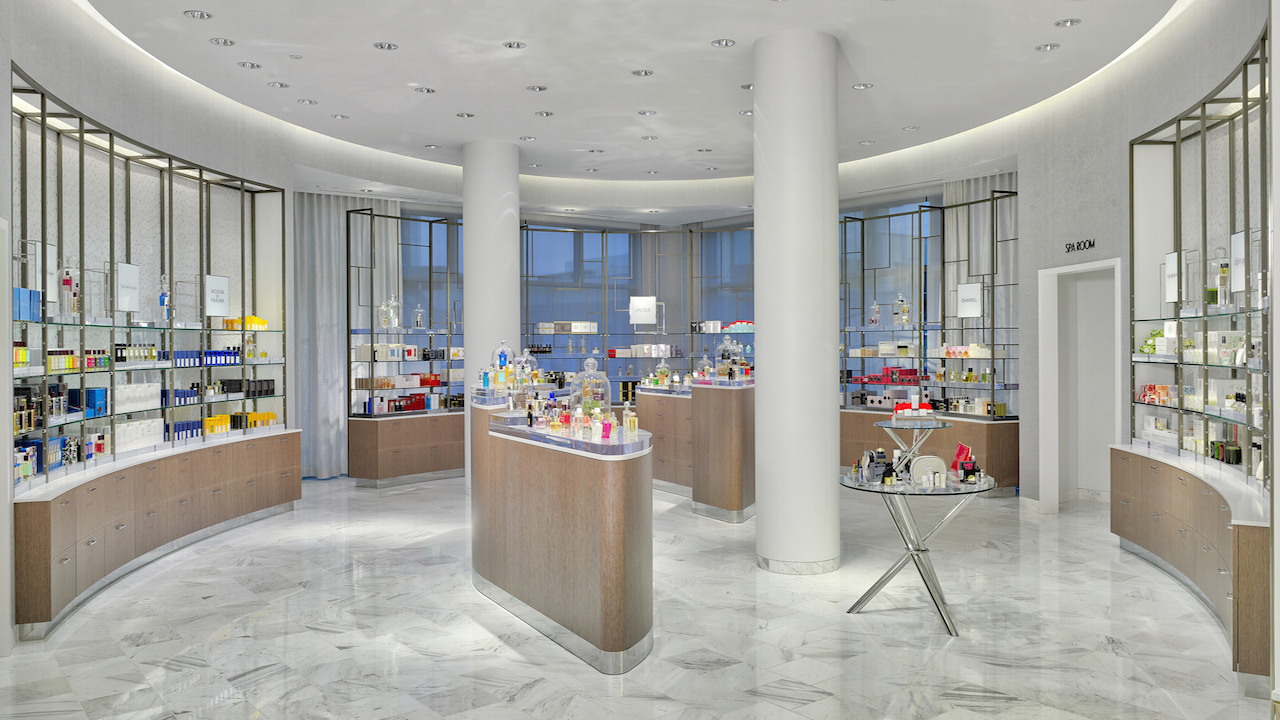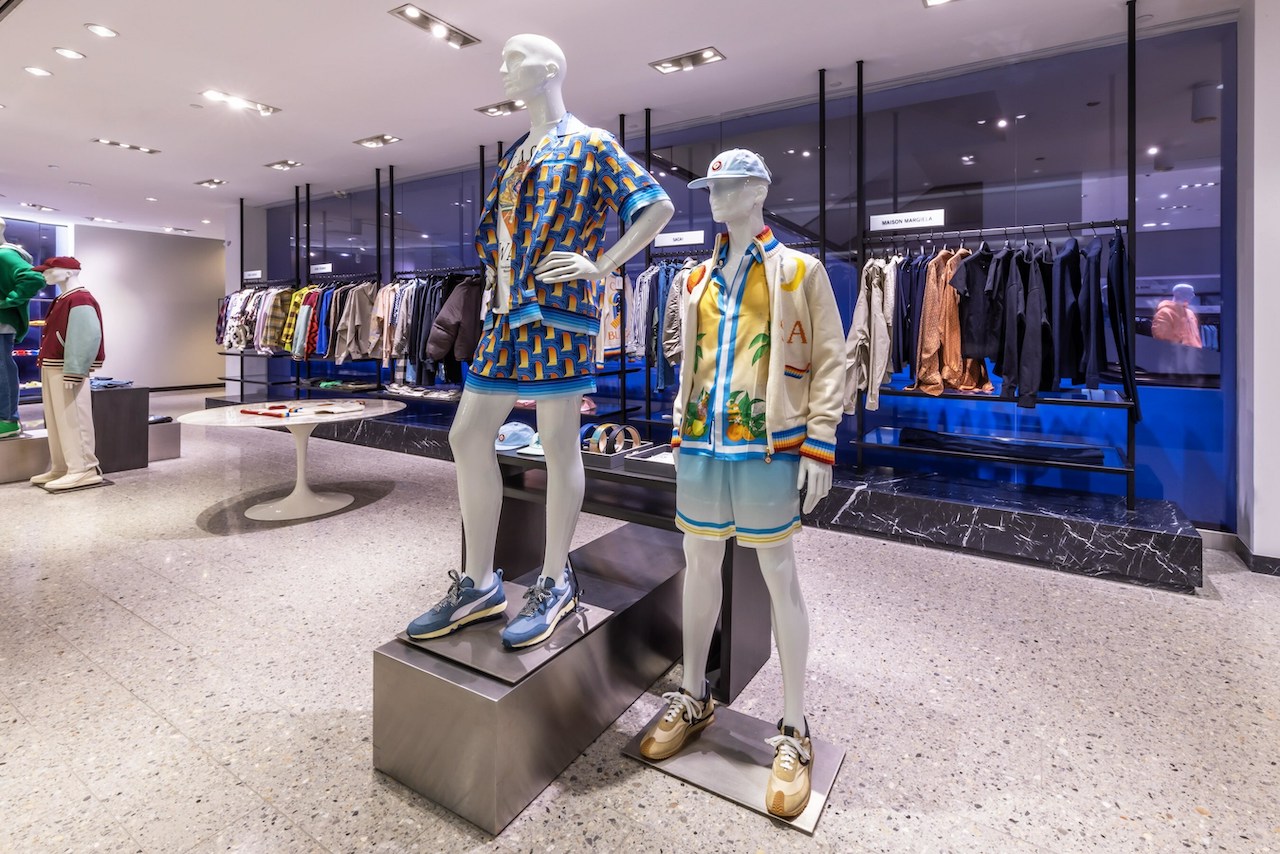Brand Comparison: Saks and Neiman Marcus

Saks and Neiman Marcus, two iconic luxury department stores, have been shaping the retail landscape for over a century. Both brands share a commitment to exclusivity, impeccable service, and a discerning clientele, but they also have distinct brand positions, target audiences, and brand images.
Brand Positioning
Saks Fifth Avenue is renowned for its sophisticated and fashion-forward approach. Its flagship store in Manhattan is a landmark destination for luxury shoppers, offering an unparalleled selection of designer apparel, accessories, and home goods. Saks targets a discerning clientele seeking the latest trends and exclusive collaborations.
Neiman Marcus, on the other hand, has a more traditional and conservative brand positioning. Its stores are known for their elegant ambiance and curated collections of luxury brands. Neiman Marcus caters to a loyal customer base that values timeless style, exceptional craftsmanship, and personalized service.
Target Audience
Saks Fifth Avenue primarily targets affluent and fashion-conscious individuals. Its clientele is drawn to the store’s trendy offerings and celebrity endorsements. Neiman Marcus, on the other hand, has a broader target audience that includes both traditional luxury shoppers and younger consumers seeking a more modern and accessible luxury experience.
Brand Image
Saks Fifth Avenue has a reputation for being chic and aspirational. Its marketing campaigns often feature high-profile models and celebrities, reinforcing its image as a fashion authority. Neiman Marcus, on the other hand, is known for its understated elegance and timeless appeal. Its advertising focuses on the quality and craftsmanship of its products, emphasizing its commitment to luxury and tradition.
Historical Evolution
Both Saks and Neiman Marcus have undergone significant transformations over the years. Saks Fifth Avenue was founded in 1896 as a small dry goods store. It quickly rose to prominence as a luxury destination, known for its lavish window displays and personalized service. Neiman Marcus was founded in 1907 in Dallas, Texas. It established itself as a regional powerhouse, catering to the needs of wealthy oil barons and socialites. Over the decades, both brands have expanded their reach through acquisitions and new store openings, becoming national and international luxury icons.
Product Offerings and Merchandising Strategies: Saks And Neiman Marcus

Saks and Neiman Marcus, renowned luxury retailers, present diverse product offerings and employ distinct merchandising strategies to cater to their discerning clientele. Their product assortments span multiple categories, including apparel, accessories, beauty, homeware, and fine jewelry, offering a comprehensive selection of premium brands and exclusive collections.
Saks has a reputation for its curated approach to product selection, emphasizing unique and emerging designers alongside established luxury labels. Neiman Marcus, on the other hand, prides itself on its extensive assortment, offering a wider range of brands and product lines to appeal to a broader customer base.
Visual Merchandising
In terms of visual merchandising, both Saks and Neiman Marcus prioritize creating an immersive and luxurious shopping experience. Saks employs a sophisticated and minimalist approach, showcasing products in sleek displays that highlight their design and quality. Neiman Marcus, in contrast, adopts a more opulent and theatrical style, utilizing elaborate window displays and in-store installations to capture the attention of shoppers.
Customer Experience
Saks and Neiman Marcus recognize the importance of providing exceptional customer service. Saks focuses on personalized shopping experiences, offering dedicated stylists and exclusive events to cater to the individual needs of its clientele. Neiman Marcus, on the other hand, emphasizes a high level of convenience and accessibility, with its online presence and mobile app complementing its brick-and-mortar stores.
Trends and Innovations
Both Saks and Neiman Marcus continuously adapt their product offerings and merchandising strategies to align with evolving consumer preferences and industry trends. They embrace sustainable practices, showcasing eco-friendly and ethical fashion brands. Additionally, they leverage digital technologies to enhance the customer experience, such as virtual styling services and personalized recommendations.
Customer Service and Loyalty Programs
Saks and Neiman Marcus prioritize customer service as a cornerstone of their brand strategies. Both retailers offer a range of services designed to enhance the shopping experience, including personal styling, complimentary gift wrapping, and exclusive in-store events.
Key Touchpoints and Differentiation Strategies
- Saks Fifth Avenue: Known for its personalized approach, Saks offers dedicated concierge services, in-store beauty treatments, and exclusive shopping events for loyalty members.
- Neiman Marcus: Focuses on creating a luxurious and memorable experience, with personal shoppers, in-home styling services, and access to exclusive designer collaborations.
Loyalty Programs, Saks and neiman marcus
Both Saks and Neiman Marcus have robust loyalty programs designed to reward repeat business and foster customer engagement.
- SaksFirst: Saks’ loyalty program offers tiered membership levels with benefits such as exclusive discounts, early access to sales, and personalized rewards.
- InCircle: Neiman Marcus’ loyalty program provides members with points for every purchase, redeemable for rewards, special offers, and access to exclusive events.
Role in Building Brand Loyalty
Exceptional customer service and loyalty programs play a vital role in building brand loyalty and driving repeat business.
- Personalized experiences: By offering personalized services and rewards, Saks and Neiman Marcus create a sense of exclusivity and value for their customers.
- Emotional connection: Positive customer service experiences and loyalty benefits foster an emotional connection with the brands, increasing customer loyalty.
- Increased revenue: Loyalty programs encourage repeat purchases and provide valuable insights into customer preferences, enabling brands to tailor their offerings and drive revenue.
Saks and Neiman Marcus, renowned for their luxurious offerings, have always stood apart in the realm of fashion. However, they recently found common ground with a delectable treat: krispy kreme free doughnuts. These sugary delights brought a moment of indulgence to the bustling streets where Saks and Neiman Marcus reside, reminding us that even amidst the opulence, there’s always room for a taste of simple pleasures.
Saks and Neiman Marcus, renowned for their luxurious offerings, cater to discerning clientele. However, amidst their impeccable displays, a different kind of recall has emerged. Cat food recalls have cast a shadow on the industry, reminding us that even the most beloved indulgences can be tainted by unforeseen circumstances.
As Saks and Neiman Marcus continue to uphold their reputation for excellence, they remain vigilant in ensuring the well-being of both their human and feline patrons.